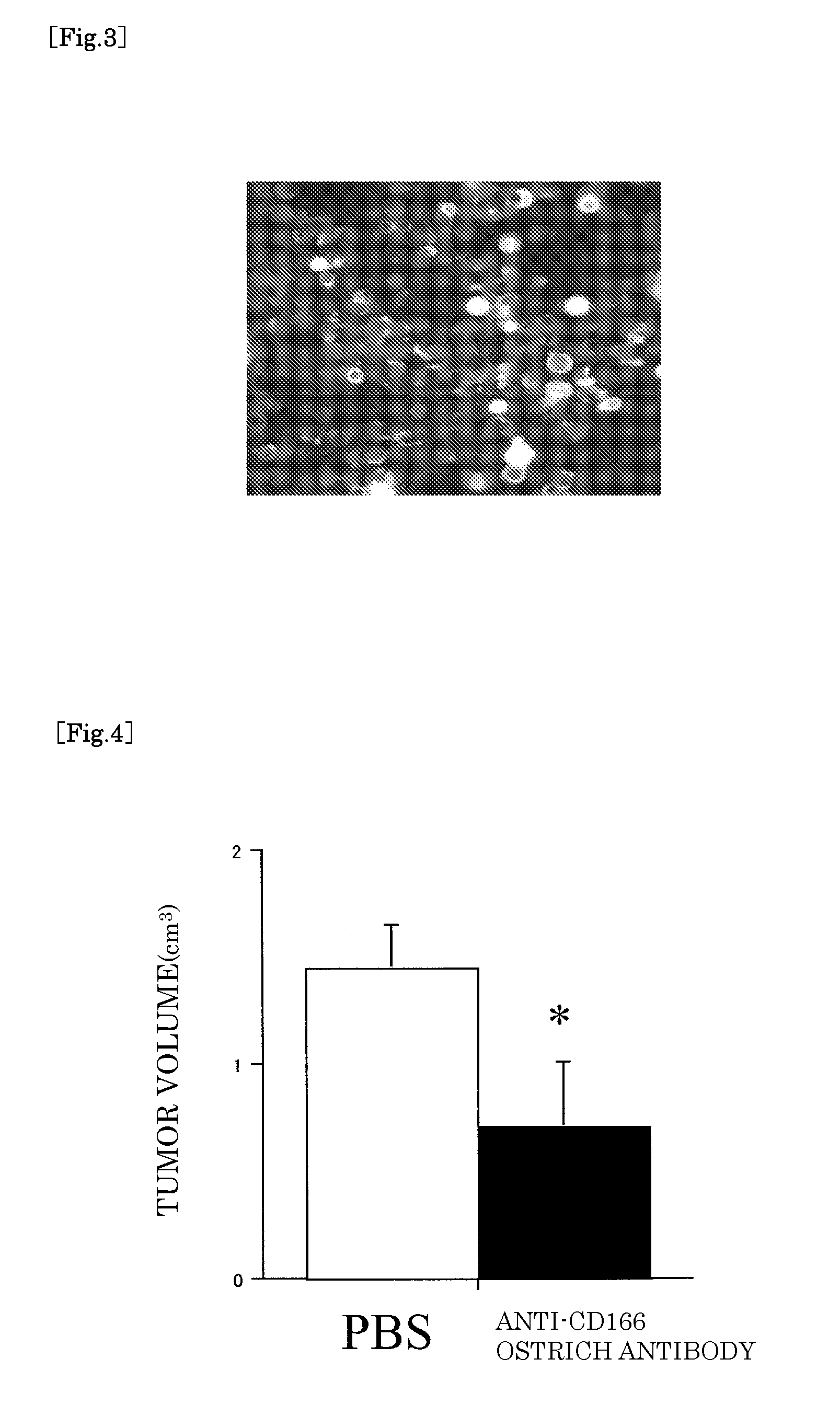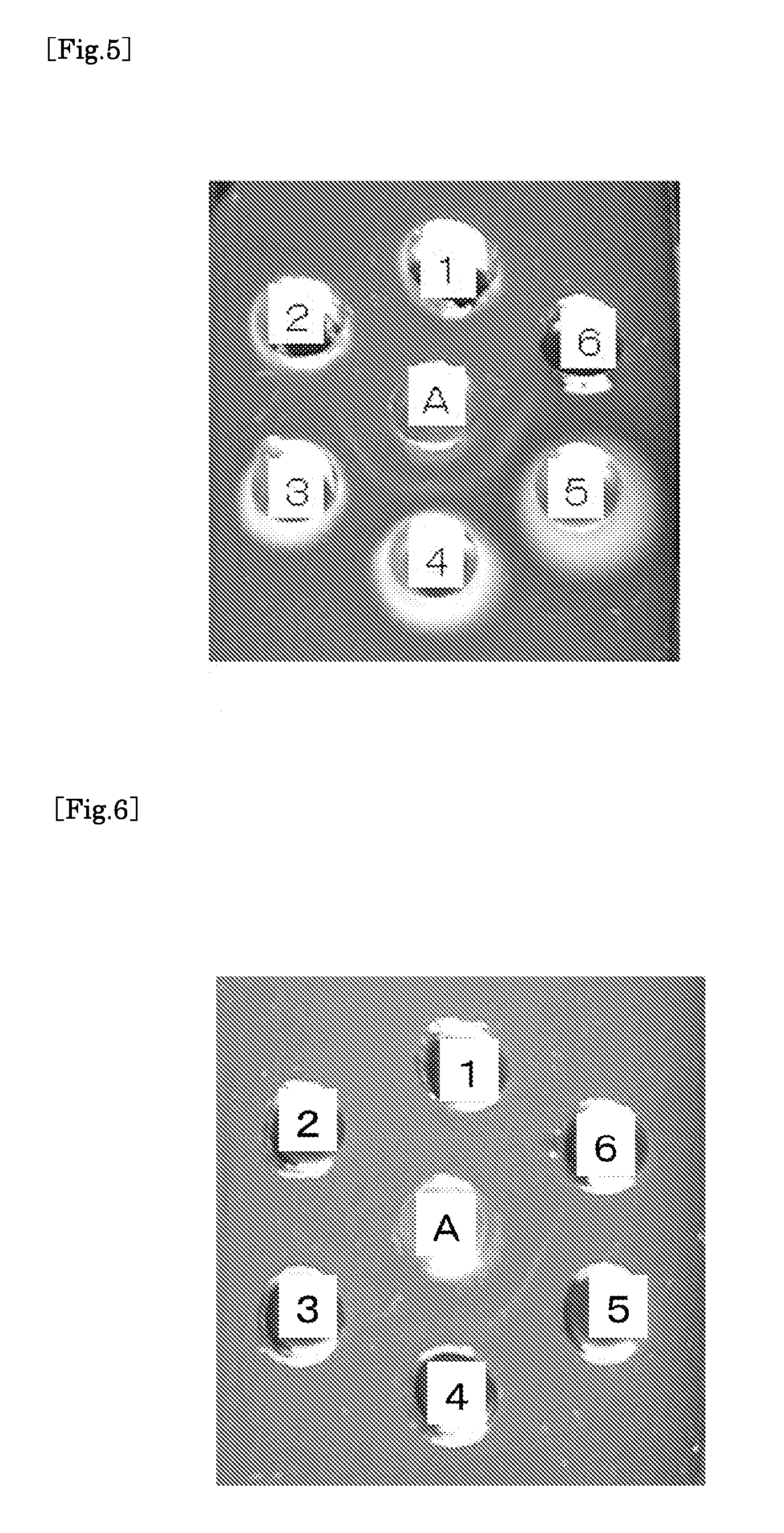Antibody produced using ostrich and method for production thereof
- Summary
- Abstract
- Description
- Claims
- Application Information
AI Technical Summary
Benefits of technology
Problems solved by technology
Method used
Image
Examples
example 1
[0052]Produced was the antibody against human CD166 protein which may be used as a marker of various cancers such as lung cancer, melanoma and prostate cancer. In this production, a synthetic peptide was used as the antigen; i.e., twenty amino acids in the fourth Ig loop of the extracellular region, which are highly reserved among the mammals. The sequence of the twenty amino acids is all the same among the human, the mouse and the rabbit. Using the synthetic peptide, the mouse (BALBc), the rabbit (white kind of Japan) and the ostrich (an infant at the age of three months) were immunized every other week (total three times) and then, each blood was collected.
[0053]The first immunization was a mixture of the liquid (0.5 mL) with 100 μg of antigen and 0.5 mL of complete adjuvant, and the mixture was injected for vaccination into the breast muscle of the ostrich and into the dorsal skin of the rabbit respectively. 0.4 mL of this mixture was injected for vaccination into the dorsal skin...
example 2
[0056]Using the anti-CD166 ostrich antibody produced by Example 1 as a primary antibody, immunofluorescence assay was carried out to cultured human lung cancer cells (A549 cells). As a result, the antibody strongly reacted to the cell membranes of the lung cancer cells (FIG. 3). In this experiment, at first, the A549 cells were cultured during a whole day on a coverslip, and then fixed with the Zamboni solution. Next, the anti-CD166 ostrich antibody (1 mg / mL) produced by Example 1 was diluted to 1000 times with PBS, and the antibody was used as a primary antibody in the reaction with the A549 cells for one hour at 37° C. Then, the reaction using a secondary antibody was carried out. FITC labeled anti-ostrich IgG rabbit polyclonal antibody (1 mg / mL) produced by Example 1 was diluted to 1000 times with PBS, and the antibody was used as a secondary antibody in the reaction with the A549 cells for one hour at 37° C. After the reaction, the A549 cells were observed with fluorescence micr...
example 3
[0057]106 of cultured human lung cancer cells (A549 cells) were subcutaneously transplanted to each of five nude mice. From five days after the transplant, the anti-CD166 ostrich antibody (120 μg) produced by Example 1 was intraperitoneously administered every week, and tumor volume of each mouse was measured three weeks after the transplant. Only PBS was administered to a control mouse. As a result, it turned out that tumor growth was significantly suppressed in the group to which the anti-CD166 ostrich antibody was administered (FIG. 4).
PUM
| Property | Measurement | Unit |
|---|---|---|
| weight | aaaaa | aaaaa |
| weight | aaaaa | aaaaa |
| weight | aaaaa | aaaaa |
Abstract
Description
Claims
Application Information
 Login to View More
Login to View More - R&D
- Intellectual Property
- Life Sciences
- Materials
- Tech Scout
- Unparalleled Data Quality
- Higher Quality Content
- 60% Fewer Hallucinations
Browse by: Latest US Patents, China's latest patents, Technical Efficacy Thesaurus, Application Domain, Technology Topic, Popular Technical Reports.
© 2025 PatSnap. All rights reserved.Legal|Privacy policy|Modern Slavery Act Transparency Statement|Sitemap|About US| Contact US: help@patsnap.com



